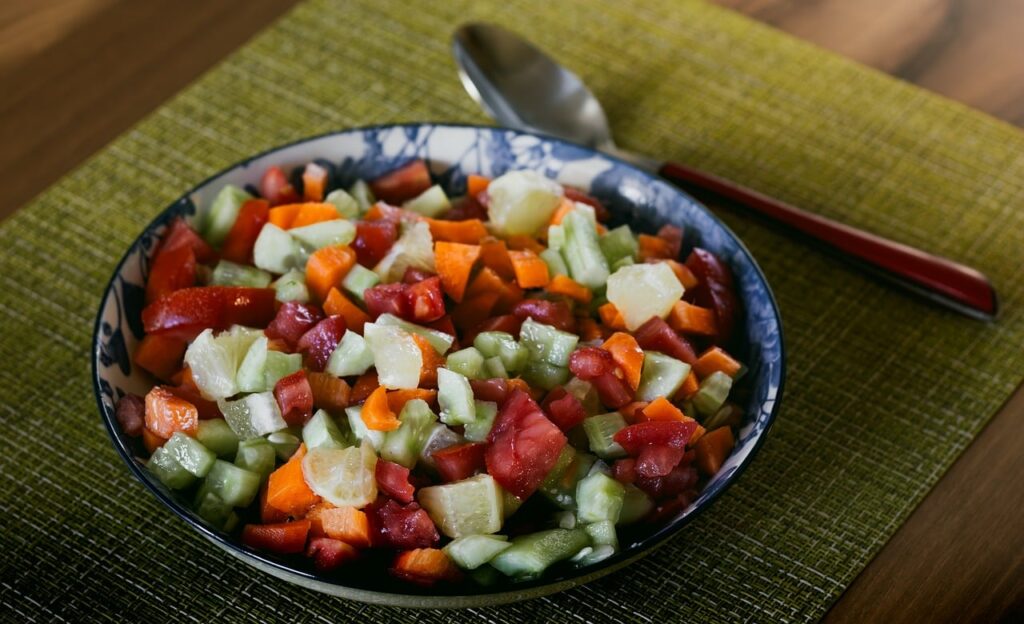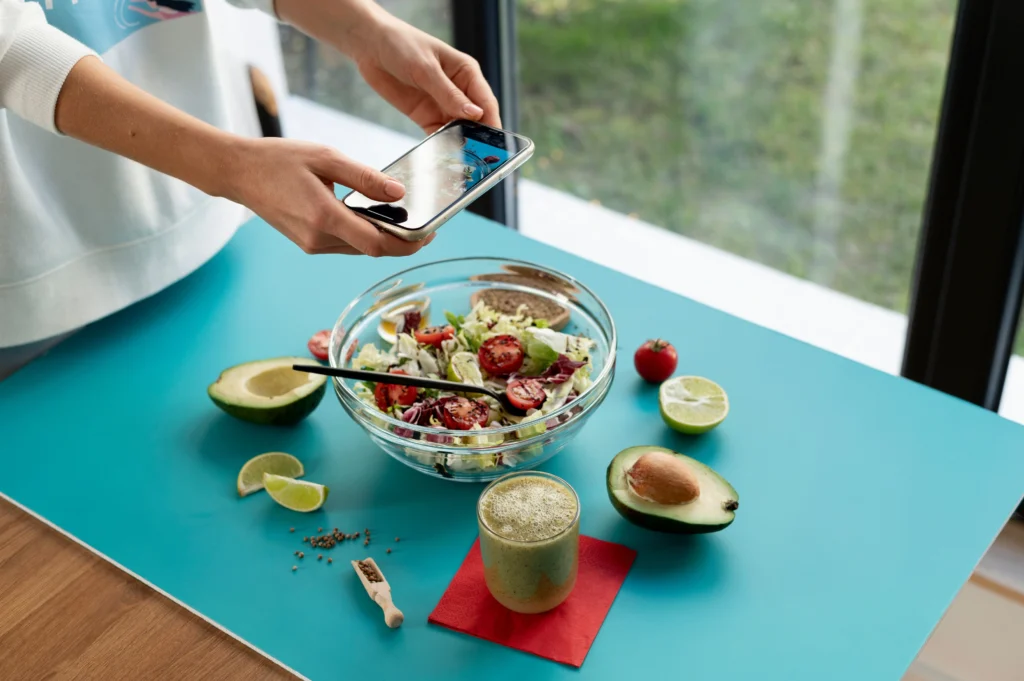Having a well-stocked vegan kitchen is key to making tasty, healthy meals. With the right ingredients, you can easily cook up delicious dishes. It’s important to have both pantry staples and fridge essentials to succeed in vegan cooking.
Choose versatile ingredients that are rich in protein, fiber, and nutrients. Beans and legumes, like chickpeas and lentils, are great for protein and fiber. Nutritional yeast, or ‘nooch,’ is packed with B vitamins and minerals.
For depth and umami flavor, use soy sauce or tamari. These sauces are great for stir-fries and dressings. Nut butters, such as peanut butter, are tasty and versatile in vegan cooking.
Make sure to have shelf-stable plant milk, like soy or almond milk, in your pantry. These are perfect for smoothies and baked goods. Use olive, coconut, and avocado oils for cooking, as they’re common in vegan recipes.
Don’t forget grains and pasta! Keep quinoa, brown rice, and pasta, including gluten-free options, on hand. These items last long and offer many meal ideas. Nuts, especially cashews, are great for creamy sauces and vegan cheeses.
Stocking Your Vegan Pantry with Basics
Starting your vegan cooking journey means having the right pantry. Legumes are key, offering vegan protein sources like lentils, chickpeas, and kidney beans. I keep a variety, including green, yellow, red, black, and brown lentils.
Whole grains are also essential. I have quinoa, brown rice, wild rice, and oats. These grains are full of fiber and are the base for many meals. I also have different pasta types, like rigatoni, fusilli, and spaghetti, and gluten-free options like rice noodles and soba noodles.
Nuts and seeds are packed with nutrients. Almonds, cashews, walnuts, sunflower seeds, and hemp seeds are my favorites. They’re great for snacking, adding crunch to salads, or making creamy sauces and dressings.
For flavor, I use a variety of spices and herbs. Turmeric, cumin, cinnamon, smoked paprika, and nutritional yeast are my top picks. I also have oils and vinegars like olive oil, coconut oil, apple cider vinegar, and balsamic vinegar. They’re crucial for cooking and making tasty dressings.
Must-Have Vegan Refrigerator Items
Stocking your vegan fridge with the right items can change your cooking game. Plant-based milk like soy, almond, or oat milk is a must. It adds creaminess to coffee and is great in baking. I always have a few cartons ready for any recipe.
Fermented foods are also a must. Think pickles, olives, sauerkraut, and kimchi. They add flavor to sandwiches, salads, and bowls. Plus, they’re good for your gut and digestion.
Don’t forget fresh produce. I focus on seasonal fruits and veggies for the best taste and nutrition. Spinach, kale, bell peppers, and citrus fruits are always in my fridge. They make quick and healthy meals easy.
Other essentials include coconut milk for creamy dishes, vegan yogurt for desserts, and tofu for protein. With these items, you can make tasty, plant-based meals anytime.
Oils, Vinegars, and Condiments for Flavor
No vegan kitchen is complete without oils, vinegars, and condiments. They add flavor and depth to your dishes. These ingredients bring healthy fats, acid, and savory elements that make your cooking better. Let’s look at some must-haves for your pantry.
Start with oils. Extra virgin olive oil is great for sautéing, roasting, and dressing salads. It’s good for your heart. Coconut oil adds a tropical taste and works as a butter substitute in vegan baking. Grapeseed and sesame oils are perfect for high-heat cooking and Asian dishes.
Then, get some vinegars. Apple cider vinegar adds tang to dressings and marinades. It also helps lower blood sugar. Balsamic vinegar gives a rich, sweet taste to roasted veggies and salads. Rice vinegar is key in Asian cooking, and red and white wine vinegars are good for many recipes.
Lastly, have a variety of condiments for tasty vegan sauces and dips. Tahini, from ground sesame seeds, is vital for homemade hummus and dressings. Dijon and whole-grain mustards add zest to sandwiches and sauces. Coconut aminos and tamari are great soy sauce alternatives. And hot sauces like sriracha add a kick!
With these oils, vinegars, and condiments, you’re set to make many delicious vegan dishes. Try different mixes to find your favorites. This way, you’ll always be excited about cooking with plants.
Vegan Pantry Essentials for Easy Meal Prep
Having the right vegan essentials in your pantry makes quick meals easy. Canned goods like diced tomatoes and coconut milk are great for fast meals. Beans, such as black beans and chickpeas, are perfect for tacos and veggie burgers.
Dried fruits and nuts are a must in my pantry. Raisins and apricots add sweetness to recipes. Nuts like almonds and walnuts are good for snacking and baking. They’re full of healthy fats and protein.
I also keep grains, pastas, and flours ready. Quinoa and wild rice are great for filling meals. Almond flour and oat flour are useful for baking. With these, you can make many tasty vegan dishes quickly.
Baking Essentials for Vegan Treats
As a vegan baker, I’ve learned that the right kitchen tools are crucial. Egg replacers are a must, and you can make them with flax meal or applesauce. For example, mixing 1 tablespoon of ground flaxseed with 1/4 cup of water makes a great flax egg substitute.
Non-dairy butter is also essential. I keep coconut oil and nut butters on hand for richness and texture. For a light, fluffy texture, I use 1/4 cup of dairy-free yogurt or whipped silken tofu.
Natural sweeteners are a key part of my baking. I prefer maple syrup, coconut sugar, and dates for sweetness. Soaking 1/4 cup of pitted dates in hot water for 20 minutes and blending them can replace one egg in many recipes.
No vegan baker’s pantry is complete without various flours, starches, and leavening agents. I always have all-purpose and whole grain flours, baking powder, and soda. With these basics and a bit of creativity, vegan baking can be just as tasty and fulfilling as traditional baking. Plus, it’s better for animals and the environment.
Building Confidence with Vegan Cooking Techniques
Learning vegan cooking techniques boosts your kitchen confidence. Begin with mise en place, organizing ingredients before cooking. This step makes cooking more efficient and fun.
Flavor building is crucial in vegan cooking. Use aromatics like garlic and onion, and toast spices. Also, add umami-rich ingredients like mushrooms and tomatoes for deeper flavors. Many dishes can be made vegan by swapping out ingredients, like using vegetable broth instead of chicken broth.
Learning to substitute ingredients is key for vegan cooks. Try nut butters or avocado for dairy, flax eggs for baking, and jackfruit for meat. As you get better, explore recipes from different cultures, like Indian or Asian dishes, which often use plant-based ingredients.
Start with simple, healthy recipes and affordable ingredients to build confidence. Whole foods are better than processed substitutes because they’re more nutritious and cheaper. With practice and the right tools, you’ll soon be making tasty, plant-based meals.
Organizing Your Vegan Kitchen for Success
A well-organized vegan kitchen makes meal planning and food storage easy. Group similar items like beans, grains, nuts, and seeds together. Using clear containers keeps your pantry tidy and lets you see what you have.
Labeling and dating bulk items helps you use ingredients before they spoil. This way, you always have fresh ingredients ready to use.
Proper storage is crucial for keeping produce fresh. Store leafy greens and herbs in the fridge with damp paper towels. Root vegetables like potatoes and onions should be in a cool, dark spot.
Onions and potatoes shouldn’t be stored together because onions can make potatoes spoil faster.
Having a meal planning system is a big help. I plan my meals each week using pantry staples and seasonal produce. This saves time and money and ensures I have healthy meals all week.
On busy days, I turn to quick recipes like chickpea curry or lentil soup. These recipes use pantry essentials and are easy to make.
Organizing your vegan kitchen and planning meals well sets you up for success. With a stocked pantry, good storage, and planning, making delicious vegan meals becomes easy.






